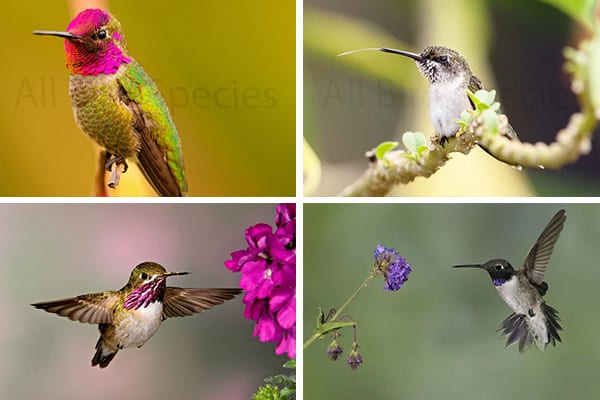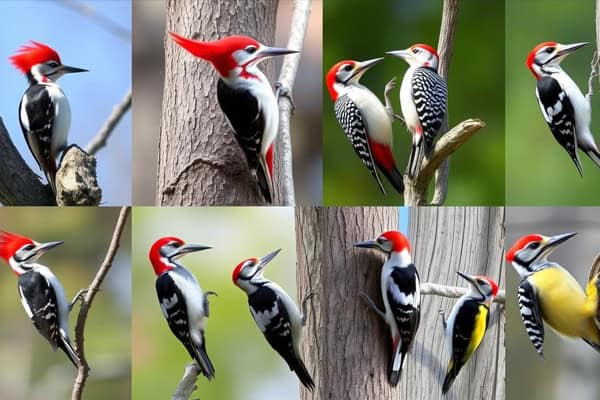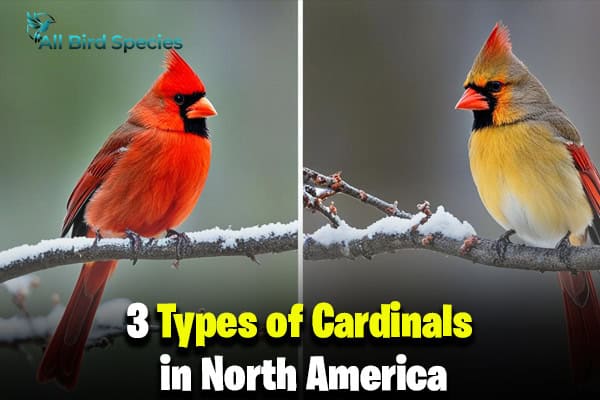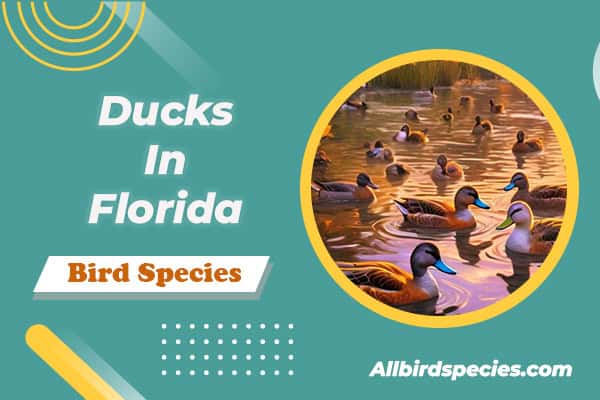2 Types Of Vultures in Texas (ID Guide With Pictures)
Ever thought about the variety of Vultures in Texas? We’re focusing on two vulture species found in the Lone Star State: the Turkey Vulture and the Black Vulture. These scavengers are key to our ecosystem. Let’s learn more about their unique traits, behaviors, and conservation efforts.
~2 Types Of Vulture Species Found in Texas~
- Black Vulture
- Turkey Vulture
1. Turkey Vulture
- Scientific name: Cathartes aura
- Life span: 16-20 years
- Size: 66-81 cm
- Weight: 0.9-2.3 kg
- Wingspan: 1.8-2.3 m
The Turkey Vulture, Cathartes aura, is a common sight across Texas. It has black feathers, a red bald head, and long, wide wings. This large bird can grow up to 32 inches long and has a wingspan of up to 6 feet.

Physical Description and Identification
Turkey Vultures are great at soaring and gliding. They often circle high in the sky or fly low to the ground looking for dead animals. Also, They use their strong sense of smell to find food, which is mostly dead animals.
These birds are well-suited for their scavenging life. Also, They have featherless heads, which helps them eat without getting dirty.
Habitat and Range in Texas
In Texas, Turkey Vultures breed all over the state. They live in forests, swamplands, prairies, and dry lands. The breeding season peaks in April and May in Texas.
Even though there are few breeding records in some areas, the BBS reports a steady number of Turkey Vultures in Texas for nearly thirty years.
Behavior and Adaptations
Turkey Vultures only eat carrion, including mammals, reptiles, birds, amphibians, fish, and invertebrates. They can be seen flying high, up to 20,000 feet. Their favorite places in Texas are open areas like roadsides, suburbs, pastures, and rangelands.
2. Black Vulture
- Scientific name: Coragyps atratus
- Life span: 15-20 years
- Size: 56-66 cm
- Weight: 0.9-1.6 kg
- Wingspan: 1.3-1.5 m
The Black Vulture is a common sight in Texas, alongside the Turkey Vulture. They stand out with their all-black look and shorter bodies. These birds are found in the eastern part of Texas and are becoming more common.

Distinguishing Features
Black Vultures are easy to tell apart from Turkey Vultures. They have a fully black body, unlike the Turkey Vulture’s reddish-pink head and light belly. They also look more compact than Turkey Vultures. These differences help you know which bird you’re seeing in the sky.
Nesting and Breeding Habits
Black Vultures breed from late January to August. They lay eggs as early as January 28 and the young stay in the nest until August 21. Both parents take turns keeping the eggs warm and caring for the chicks. They often nest on the ground in places like caves or under bushes.
Population Trends and Patterns
In Texas, vultures are seeing big changes in their numbers. Also, Their populations are growing, especially in Central and South Texas, and along the Coastal Bend. This growth is thanks to warmer weather and plenty of food from roadkill and humans.
Also, This means more vultures are staying in Texas all year, not just migrating. But, things might be different in North Texas. It’s not clear if vultures are growing there too. We need more research to understand their migration and numbers better.
Data from the Christmas Bird Count (CBC) and the Breeding Bird Survey (BBS) show interesting trends. Nationally, turkey vultures are growing by 1.79% each year. Black vultures are growing even faster, by 5.97% annually from 1990 to 2002. Texas is seeing similar growth, with more vulture incidents reported to the USDA Wildlife Services over time.
Furthermore, These birds are adapting well to Texas’s changing environment. It’s important to understand their population trends and patterns. This knowledge helps us manage their presence and live well with them in Texas.
Safety Concerns and Precautions
Vultures in Texas are mostly harmless but can pose some safety risks. They might target weak or sick animals, especially during calving and lambing. Black vultures can attack and kill newborn animals, causing injuries or death.
Large vulture groups near airports also increase the risk of bird strikes with planes. This can be very dangerous. The FAA says landfills close to airports are not safe because of the bird dangers they bring.
Vultures roosting on power lines can lead to power outages and communication problems. This can cause big disruptions and cost a lot of money.
Large vulture groups can also leave behind a lot of smelly waste. This can harm property, vehicles, and water, posing health risks to people. Vultures can contaminate water with harmful bacteria, affecting residents and businesses.
When threatened, vultures may vomit, which can be unpleasant for those nearby. Managing vulture populations is key to reducing safety risks and nuisance issues. Methods like changing their habitat, excluding them, and using fake birds can help solve the problem.
Vultures in Texas: A Vital Role
Vultures in Texas play a huge role in keeping our ecosystem healthy. They are often misunderstood but are key to the balance of nature. By eating dead animals, they stop diseases from spreading to animals and people.
These birds have special features like no feathers on their heads and strong stomachs. This lets them eat meat that others can’t. Without them, our environment would be filled with dead animals.
The work of vultures is worth millions, helping to keep diseases in check. They show how important they are to our natural world.
In Texas, the turkey vulture population is growing, which is good news. Black vultures might eat young animals, but turkey vultures stick to dead ones. It’s important to understand how vital vultures are to our ecosystem.
Deterring Vultures
Vultures are interesting but can be a problem in our neighborhoods. Their droppings can harm buildings, and they might make some people uneasy. But, we can’t kill them because they’re protected by law. Luckily, there are ways to keep them away from our homes and businesses.
Using loud noises, shiny things, and fake owls or hawks can work well to scare them off. Shaking trees or using water sprayers can also make them leave. These methods can help keep vultures away from certain spots.
Vultures are most active during the day, looking for food, and resting at night. To keep them away, we should focus on the daytime. Sonic cannons that make loud sounds can chase birds away over a 10-acre area. Electric Flex Shock systems with shock tape are also good at keeping turkey vultures away.
If vultures keep coming back, it might be time to call a professional bird removal service. These experts use kind ways to move the vultures out. It might take some time and money, but it saves you trouble and money later on.
Vulture Watching and Photography Tips
If you’re interested in the majestic vultures of Texas, you’re in for a treat! These birds are great to watch and photograph. Just know where and when to look for them.
Best Places and Times to Observe
The best spots for vultures in Texas are along roadsides, near landfills, and in open areas. Early morning, from 7 am to 11 am, is the best time to see them. They warm up by spreading their wings and basking in the sun.
Watching vultures requires patience and a sharp eye. They can be hard to spot, so be ready to look closely at the sky and ground. This way, you might catch their unique behaviors and silhouettes.
Vulture Photography Tips
Photographing vultures can be rewarding. Remember to respect their space and keep a safe distance. Look for them in natural poses, like soaring, perched, or feeding. With luck and planning, you can take amazing photos of these fascinating birds.
The best times for seeing and photographing vultures in Texas are early morning. Follow these tips to have unforgettable moments with these amazing birds.
Conservation Efforts
Vultures are key to Texas’ ecosystem and are protected by the Migratory Bird Treaty Act. This law stops people from hunting, killing, or bothering these birds without a special permit. In Texas, efforts are made to keep vulture populations healthy and their homes safe. People are also taught about the important jobs these scavengers do.
Government agencies, wildlife groups, and local communities are all working hard. They keep an eye on vulture numbers, manage where they live, and teach people why vultures are important. The Vulture Conservation Texas projects help protect these amazing birds. They make sure these birds can keep living and help the natural balance in the area.
It’s very important to protect vultures in Texas. The Turkey Vulture and Black Vulture are not in danger, but they are still important. They mate for life, so keeping their numbers stable is key to their survival.
By protecting the homes of Texas vultures, we help them keep doing their important jobs. With ongoing research, teaching the public, and working together, we can make sure vultures are around for a long time. This will keep the ecosystem healthy for the future.
Check Our Previous Articles:
Wrapping Up…
Texas is home to two types of vultures: the Turkey Vulture and the Black Vulture. These birds are perfect for their job of cleaning up dead animals. They have special features like no feathers on their heads and strong stomachs. This helps them eat carrion.
Vultures are key to keeping Texas healthy by getting rid of dead meat. This stops diseases from spreading. They are important to the ecosystem.
Some people worry about vultures because they can be aggressive and damage property. But, we can keep them away without hurting them. By managing their numbers and protecting their homes, we can keep enjoying their benefits.
In short, vultures in Texas are vital to our environment. With care and understanding, we can make sure they stay around. They help our ecosystem in many ways.







